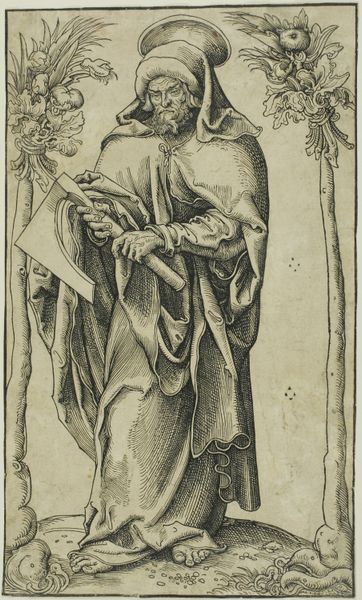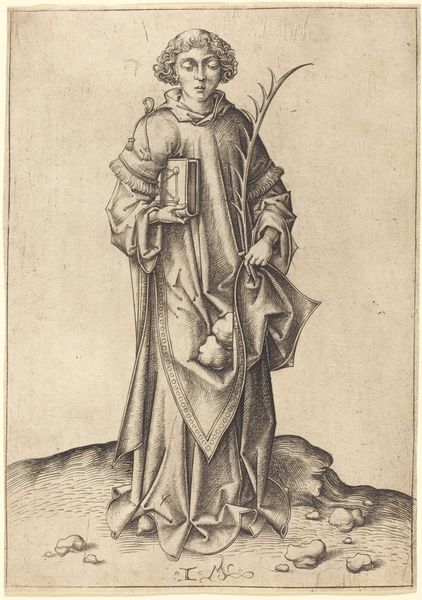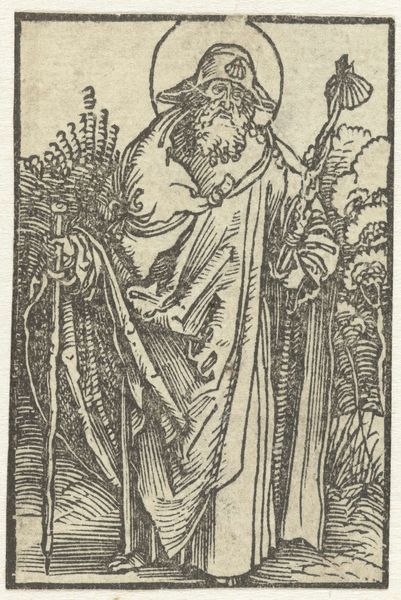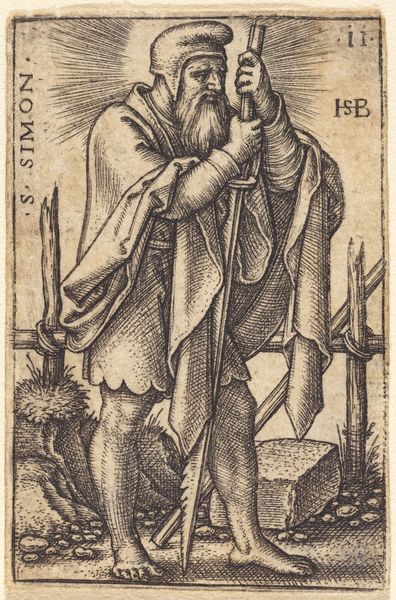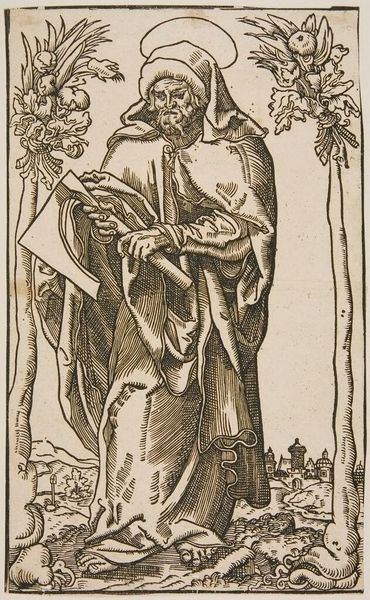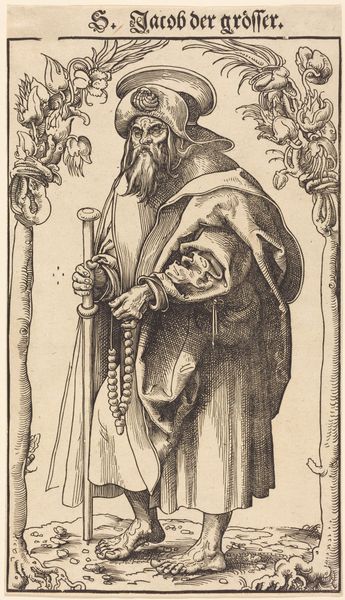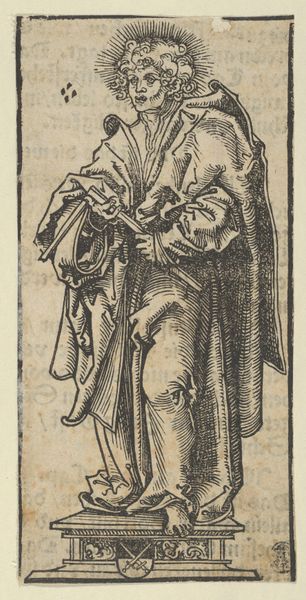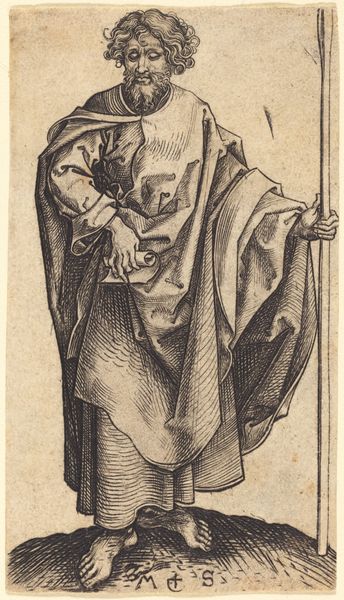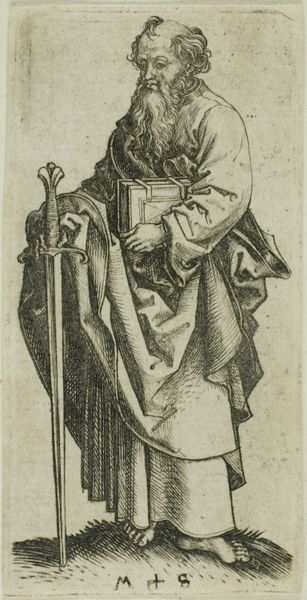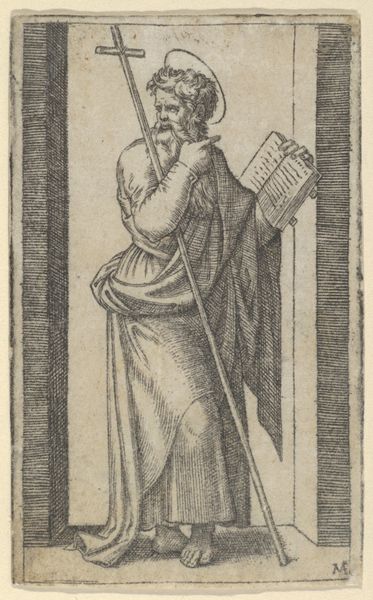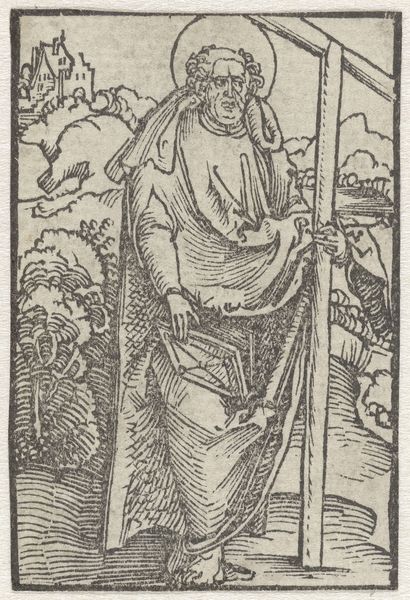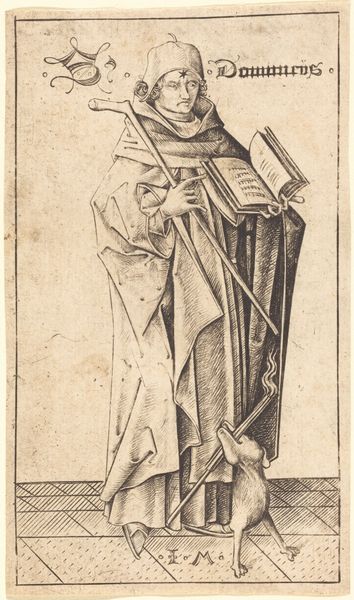
print, engraving
#
portrait
# print
#
figuration
#
line
#
history-painting
#
northern-renaissance
#
engraving
Copyright: National Gallery of Art: CC0 1.0
Curator: Here we have an engraving by Lucas Cranach the Elder, titled "Saint Bartholomew." Editor: The immediate impact is unsettling. The graphic quality of the lines themselves are quite striking. There is such crispness to the engraving, but this clashes with the brutality of the imagery; the skin draped so casually. Curator: Yes, that is Saint Bartholomew's flayed skin he carries, a clear allusion to the saint's martyrdom and thus essential to his identification. This print serves as both a historical record of religious belief and a commentary on suffering. Think about the historical context; the Reformation was gaining momentum during Cranach’s lifetime. Images of saints were used, re-used, and even destroyed. Editor: And note the way the artist has used the burin to create texture and form. The contrast between light and dark creates a sculptural effect, emphasizing the weight and volume of the figure and his unsettling burden. Curator: And yet, the vines, rendered with the same linear precision, frame the figure with such artifice; a blend of the sacred and the decorative that reflects Cranach’s broader style. We can read the artwork on several layers: Bartholomew's brutal death as emblematic of religious conflict. The piece grapples with notions of faith, persecution, and representation in a tumultuous era. Editor: Looking at the detail of the face of the saint, so serene. One can certainly observe a psychological dimension achieved through the medium's restrictions: stark, linear, yet deeply expressive. This print underscores how the very nature of a material informs its conceptual potential. Curator: Considering its historical importance and continuing relevance to questions surrounding persecution and the intersection of religion and art, what’s your takeaway? Editor: The work makes one conscious of the artist’s method, allowing its narrative to unfold as an optical experience. Curator: And for me, it reveals art’s vital function in representing and interpreting religious and political upheavals across history, speaking to the lasting struggles for freedom and self-expression.
Comments
No comments
Be the first to comment and join the conversation on the ultimate creative platform.

